Glucose 122: Causes, Symptoms, Diagnosis and Treatment
What are the causes of prediabetes? What are the symptoms of prediabetes? How do doctors diagnose prediabetes? What are the treatments for prediabetes?
Defining Prediabetes
Prediabetes is a warning sign that type 2 diabetes (T2D), which affects 1 in 10 American adults, might be in your future. Typically, this means that your blood sugar is higher than normal, but not yet high enough for a type 2 diagnosis. Prediabetes does not have any serious symptoms, but it’s a call to action to make real changes in your diet and lifestyle to prevent your blood sugar from rising and turning into type 2 diabetes.
Causes of Prediabetes
Insulin is a hormone made by your pancreas that helps your body convert glucose into fuel. When you eat a meal, the carbohydrates in your food are converted into glucose, otherwise known as blood sugar. That glucose stays in your bloodstream until your pancreas releases insulin. The insulin acts like a key that opens your cells to allow the glucose to enter, where it’s then used to fuel your body. Without insulin or when insulin is not working effectively, that glucose stays stuck in your bloodstream and accumulates, causing your blood sugar to rise.

During type 2 diabetes, your pancreas can still produce insulin, but that insulin gradually becomes less effective at helping the glucose into your cells. Prediabetes is an indicator that your body is beginning to stop using insulin as efficiently as it should. In other words, your body is starting to become resistant to insulin. When your body resists insulin, the glucose levels in your blood rise, which is how you develop prediabetes and, if that process is not stopped and allowed to progress, type 2 diabetes.
Symptoms of Prediabetes
Typically, adults with prediabetes experience either no symptoms at all, or the insulin resistance symptoms are so gradual or slight they may go unnoticed for years. Sometimes, though, there are warning signs, including increased thirst, increased hunger, fatigue, unexplained weight loss even if eating more, and frequent urination.
The last symptom happens because excess sugar in your bloodstream triggers your body to make more urine in order to flush the glucose out. The more you urinate, the more likely you are to become dehydrated, which can lead to a cycle of increased hunger and thirst signals.

Diabetes symptoms men experience can also cause sexual issues such as erectile dysfunction (ED) and decreased sex drive.
Another potential symptom is a dark patch or band of velvety skin on the back of your neck, armpit, groin, or elsewhere, which could mean that you have too much insulin in your blood, according to the American Academy of Dermatology. Other skin issues that could signal prediabetes or ineffective treatment for diabetes include yellowish, reddish, or brown patches of skin that are hard, itchy, or painful; thickening skin on the fingers, toes, or both; sudden blisters; and patches of reddish-yellow bumps that look like pimples, but are itchy.
Diagnosing Prediabetes
Diabetes is a measure of levels of sugar in your bloodstream. Physicians check this in two different ways:
- A standard blood glucose test: This requires you to fast before a blood test, so your PCP or endocrinologist can check the level of glucose in your bloodstream at any given time. Ideally, fasting glucose levels should be 99 mg/dL or lower. If your fasting blood glucose levels are between 100 and 125mg/dL, it could be considered prediabetes.
- An A1C blood test: The test for A1C, or hbA1c, is a non-fasting blood test that measures the average amount of glucose in your bloodstream over a period of three months and is measured in percentages. A healthy percentage is under 5.7%. A result between 5.7 and 6.4% suggests prediabetes.
A person who is prediabetic may not always show symptoms. In fact, the majority don’t. Oftentimes, an asymptomatic person will only get a prediabetes diagnosis if their general physician gives them a blood glucose test or checks their hbA1C readings and finds an atypical result.

Treating Prediabetes
A prediabetes diagnosis can seem scary, but it’s really an opportunity to take control of your health before there are any serious consequences. The good news is that prediabetes is reversible and can often be managed through lifestyle changes like diet and exercise.
Some key steps to take include:
- Losing a small amount of weight (even just 5-7% of your body weight)
- Engaging in regular physical activity, such as brisk walking for 30 minutes a day, 5 days a week
- Eating a healthy, balanced diet with a focus on whole, unprocessed foods
- Reducing your intake of added sugars and refined carbohydrates
- Monitoring your blood sugar levels regularly
By making these lifestyle changes, you can often reverse prediabetes and prevent the progression to type 2 diabetes. It’s important to work closely with your healthcare provider to develop a personalized plan that works for you.
When to Seek Medical Attention
If you have any of the warning signs or symptoms of prediabetes, or if you’re at high risk for developing type 2 diabetes due to factors like family history, obesity, or a sedentary lifestyle, it’s important to talk to your doctor. They can order the appropriate blood tests to determine if you have prediabetes and develop a plan to help you take control of your health.
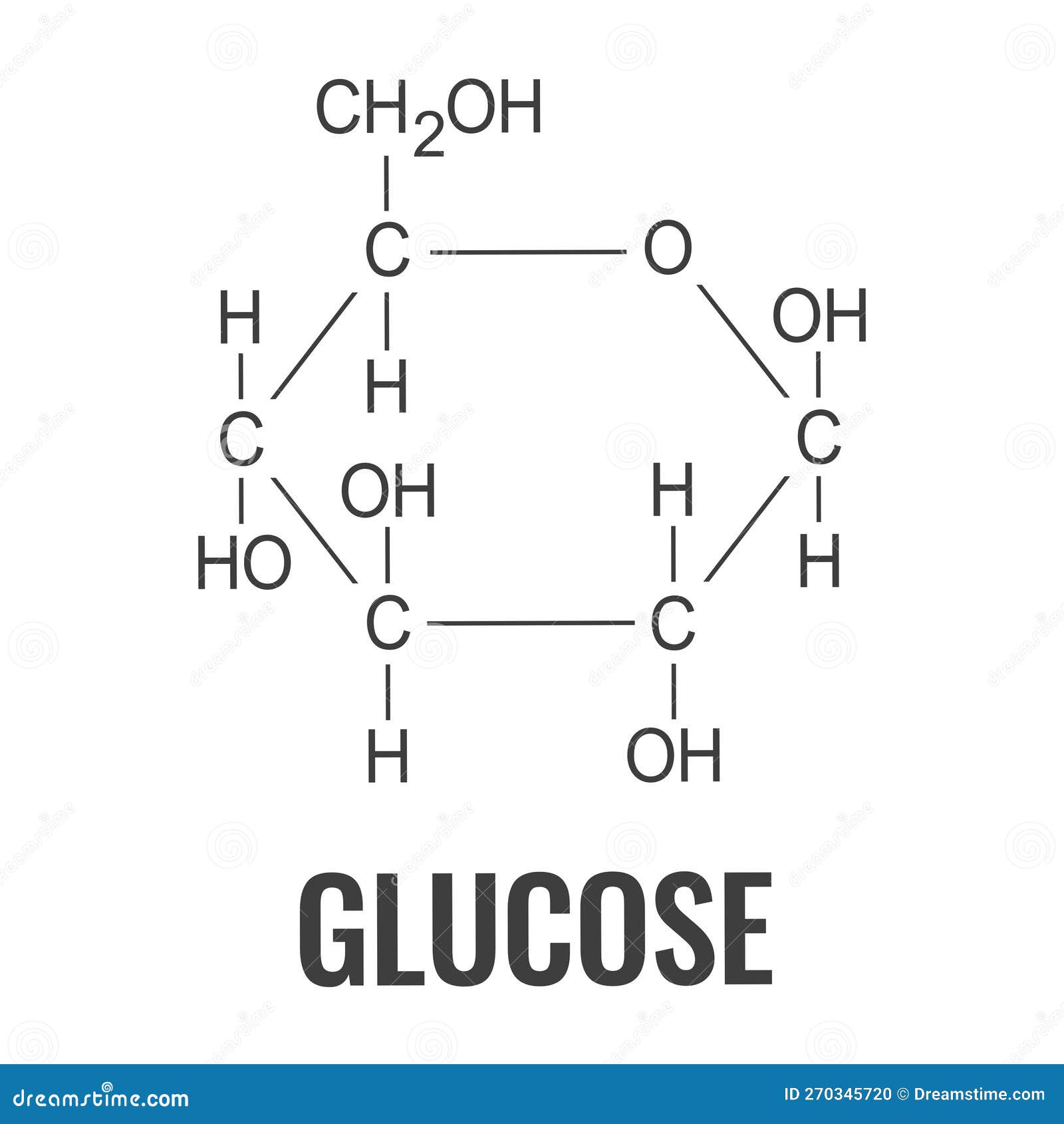
Don’t wait until your prediabetes progresses to full-blown type 2 diabetes. By taking action now, you have a great opportunity to prevent or delay the onset of this serious chronic condition.
Causes, Symptoms, Diagnosis and Treatment
Medically Reviewed
Prediabetes is a warning sign that type 2 diabetes might be in your future. Answers on how to prevent prediabetes from progressing.
Medical ReviewerJessica Rodriguez, C.N.P.
A prediabetes diagnosis can seem scary, but it’s really an opportunity to take control of your health before there are any serious consequences.
Definition
What Is Prediabetes?
Prediabetes is a warning sign that type 2 diabetes (T2D), which affects 1 in 10 American adults, might be in your future. Typically, this means that your blood sugar is higher than normal, but not yet high enough for a type 2 diagnosis.
Prediabetes does not have any serious symptoms. Think of it as a call to action.
“The way I explain prediabetes to my patients is that your body is struggling to keep your blood glucose levels in a healthy range,” says nutritionist Lauren Antonucci, R. D. “You shouldn’t panic, but you should start making real changes in your diet and lifestyle to prevent your blood sugar from rising and turning into type 2.”
D. “You shouldn’t panic, but you should start making real changes in your diet and lifestyle to prevent your blood sugar from rising and turning into type 2.”
Causes
What Causes Prediabetes?
Insulin is a hormone made by your pancreas that helps your body convert glucose into fuel. When you eat a meal, the carbohydrates in your food are converted into glucose, otherwise known as blood sugar.
That glucose stays in your bloodstream until your pancreas releases insulin. The insulin acts like a key that opens your cells to allow the glucose to enter, where it’s then used to fuel your body.
Without insulin or when insulin is not working effectively, that glucose stays stuck in your bloodstream and accumulates, causing your blood sugar to rise.
During type 2 diabetes, your pancreas can still produce insulin, but that insulin gradually becomes less effective at helping the glucose into your cells.
Prediabetes is an indicator that your body is beginning to stop using insulin as efficiently as it should.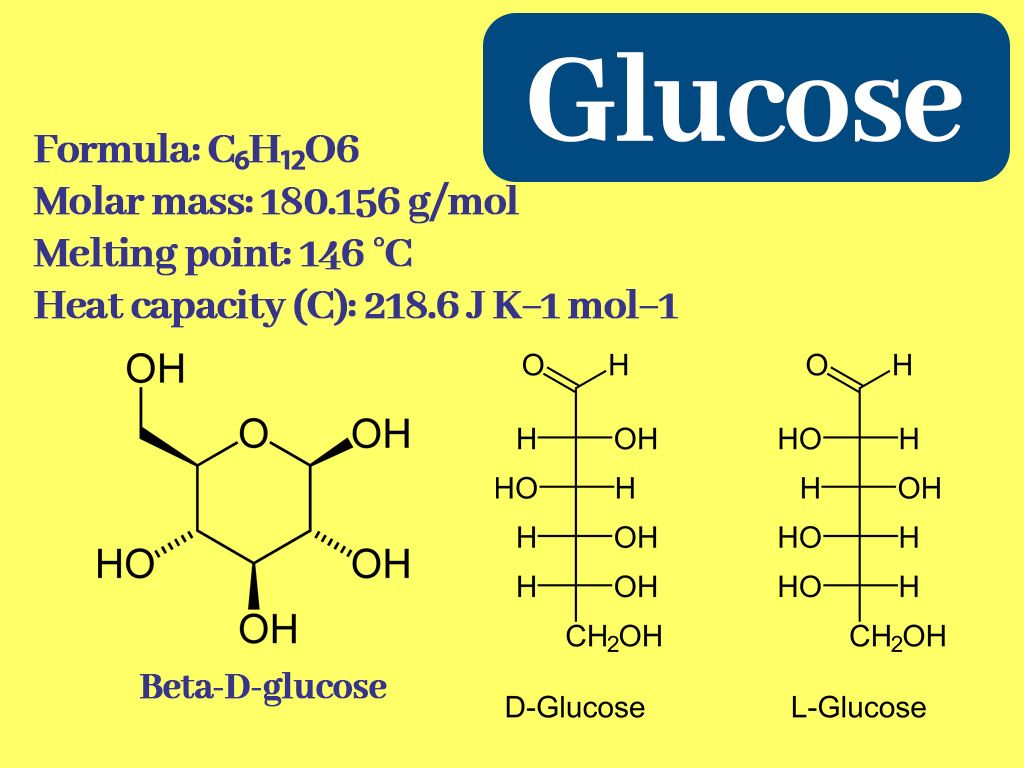 In other words, your body is starting to become resistant to insulin.
In other words, your body is starting to become resistant to insulin.
When your body resists insulin, the glucose levels in your blood rise, which is how you develop prediabetes and, if that process is not stopped and allowed to progress, type 2 diabetes.
Symptoms
Symptoms of Prediabetes
“If prediabetes was easy to detect, you wouldn’t have people go years and years before getting diagnosed with type 2 diabetes,” says Antonucci.
Typically, adults experience either no symptoms at all, or the insulin resistance symptoms are so gradual or slight they may go unnoticed for years. Sometimes, though, there are warning signs. These include:
Increased thirst
Increased hunger
Fatigue
Unexplained weight loss, even if eating more
Frequent urination
The last symptom happens because excess sugar in your bloodstream triggers your body to make more urine in order to flush the glucose out. The more you urinate, the more likely you are to become dehydrated, which can lead to a cycle of increased hunger and thirst signals.
The more you urinate, the more likely you are to become dehydrated, which can lead to a cycle of increased hunger and thirst signals.
Diabetes symptoms men experience can also cause sexual issues such as erectile dysfunction (ED) and decreased sex drive.
Dark Skin on Neck
A dark patch or band of velvety skin on the back of your neck, armpit, groin, or elsewhere could mean that you have too much insulin in your blood, according to the American Academy of Dermatology.
Other skin issues that could signal prediabetes or ineffective treatment for diabetes include yellowish, reddish, or brown patches of skin that are hard, itchy, or painful; thickening skin on the fingers, toes, or both; sudden blisters; and patches of reddish-yellow bumps that look like pimples, but are itchy.
Diagnosis
How Do Doctors Diagnose Prediabetes?
Diabetes is a measure of levels of sugar in your bloodstream. Physicians check this in two different ways:
1. A standard blood glucose test
This requires you to fast before a blood test, so your PCP or endocrinologist can check the level of glucose in your bloodstream at any given time.
Ideally, fasting glucose levels should be 99 mg/dL or lower. If your fasting blood glucose levels are between 100 and 125mg/dL, it could be considered prediabetes, says Martha McKittrick, R.D.
“I like to have people get a second test done, to make sure it’s accurate,” she says.
A reading higher than 126 mg/dL indicates diabetes.
2. An A1C blood test
The test for A1C, or hbA1c, is a non-fasting blood test that measures the average amount of glucose in your bloodstream over a period of three months and is measured in percentages.
A healthy percentage is under 5.7%. A result between 5.7 and 6.4% suggests prediabetes. Anything higher than 6.5% indicates diabetes.
A person who is prediabetic may not always show symptoms. In fact, the majority don’t. Oftentimes, an asymptomatic person will only get a prediabetes diagnosis if their general physician gives them a blood glucose test or checks their hbA1C readings and finds an atypical result.
For this reason, one of the most important things you can do is get a physical exam with bloodwork once every year.
“Your bloodwork can tell you if your glucose levels are too high, and whether or not you’re heading in the right direction as far as controlling them before you develop type 2 diabetes,” Antonucci says.
Although most people don’t show noticeable symptoms of prediabetes, if you are experiencing fatigue, excessive hunger, excessive thirst, and frequent urination, it’s better to be safe than sorry. Make an appointment to get your glucose levels checked ASAP.
Risk Factors
What Are the Risk Factors for Prediabetes?
Your risk of developing prediabetes increases when you have any of the following:
Unhealthy Diet
Diets high in sugar and processed foods raise your blood pressure and increase your level of LDL, or “bad cholesterol,” in addition to your blood glucose, putting you in danger of developing prediabetes.
Excess Weight
If you’re medically overweight, you’re at a high risk for developing prediabetes. This is especially true if you carry a lot of extra weight in your abdomen, which is known as visceral fat and can play a role in insulin resistance.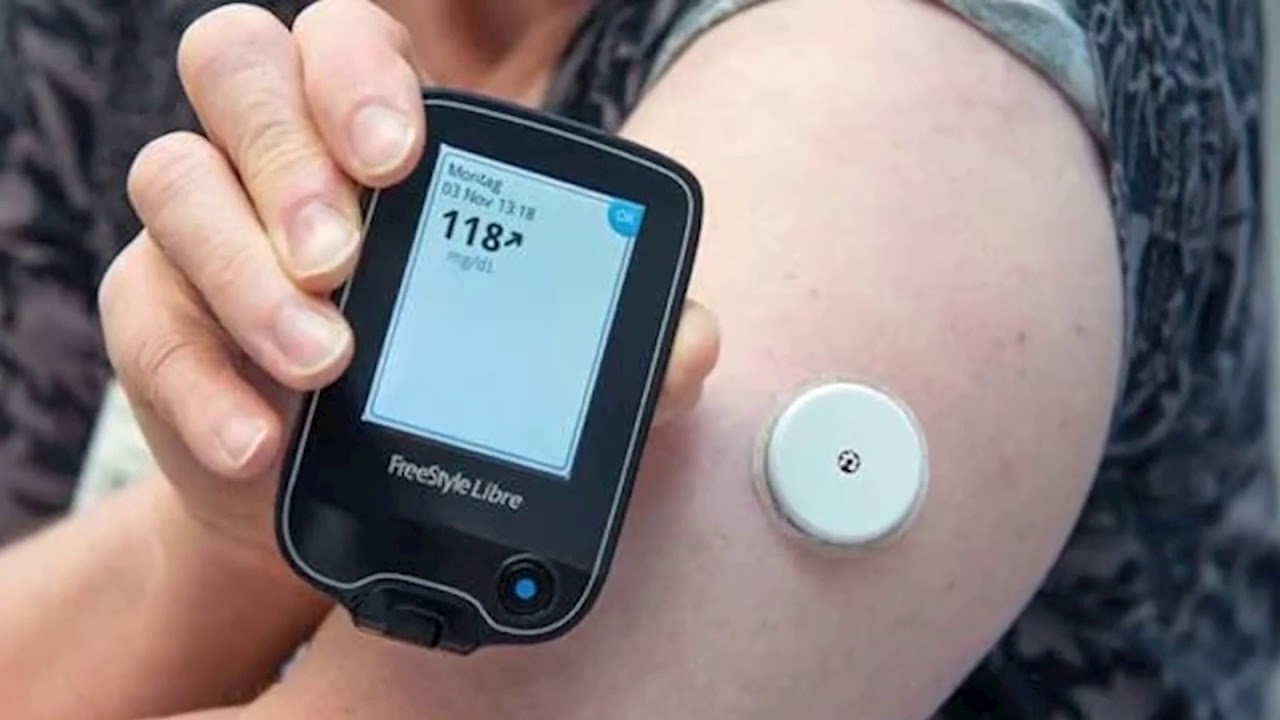
Sedentary Lifestyle
Being very inactive contributes to insulin resistance and weight gain, both of which can then lead to prediabetes. Aim to move around at least 30 minutes per day, even it is just to go on a walk.
Family History of Type 2 Diabetes
Prediabetes has a hereditary factor. If someone in your immediate family has T2D—or has had T2D in the past—you are more likely to develop prediabetes and type 2 diabetes yourself.
Your race and ethnicity also affect your likelihood of developing prediabetes. There is a genetic component, but research has shown that racial disparities in who develops diabetes have more to do with socio-economic status and the accessibility of health care and healthy food in your community than your genes.
History of Gestational Diabetes
Diabetes during pregnancy can signal a higher risk for prediabetes and type 2 diabetes later on.
Smoking
The nicotine in cigarettes decreases the sensitivity of your cells to insulin, which raises the glucose in your blood. Other chemicals in cigarettes cause inflammation and make it harder for those cells to absorb insulin.
Other chemicals in cigarettes cause inflammation and make it harder for those cells to absorb insulin.
Advanced Age
The older you are, the more at risk you become. At age 45, your likelihood of developing prediabetes starts to rise. Almost 25% of seniors over 65 have prediabetes.
Complications
Does Prediabetes Cause Complications?
Prediabetes doesn’t have any complications, but if left unchecked, it can develop into type 2 diabetes, which can then bring on severe complications. Some complications of T2D include:
Hypertension
Stroke
Kidney damage
Eye damage
Neuropathy
Skin infections
Sleep apnea
Diabetes rash
Lifestyle Changes
Is Prediabetes Reversible?
Absolutely. You can turn back your prediabetes by adopting lifestyle changes, including:
Evaluating Food Choices
For the best chance at long-term success, work with your dietitian to create a meal plan that still includes your favorite foods with slight alternations if necessary, so you don’t feel deprived and can stick to it long-term.
Some examples of this might include switching out white rice for cauliflower rice as an accompaniment to your usual dishes, or swapping “zoodles” made from squash or other vegetables for pasta so you can still enjoy your favorite recipes with less starch.
Exercise
Exercise is a great way to reverse prediabetes for a number of reasons. First, a fitness regimen can help you shed the pounds that increase your risk for prediabetes without restrictive dieting.
Additionally, when you exercise, your body uses more glucose, which helps clear it out of your bloodstream. Finally, exercise activates a cell receptor called GLUT-4, which helps absorb glucose out of your bloodstream and move it into your cells.
Cardio and weights both are exercises that help activate the GLUT-4 mechanism.
The American Diabetes Association recommends at least 150 minutes of moderate physical activity each week, which most commonly averages out to 30 minutes, five times a week. But you can also divide it up into longer workouts on days when you have more time available if you know you will be too busy to exercise on others.
But you can also divide it up into longer workouts on days when you have more time available if you know you will be too busy to exercise on others.
Losing Weight
If your doctor has medically advised weight loss for prediabetes and you don’t know where to begin (or you’ve already tried every diet with no results), ask for help.
Losing just 5% to 10% of your body weight can significantly reduce your risk of developing type 2 diabetes and eliminate your prediabetes, so invest in a nutritionist and trainer if you have found it too challenging to lose weight in the past.
Many health plans pay for diabetes educators and physical therapy, and your doctor can work with you to connect you to services that are available to help you succeed within your budget.
Uninsured? Nutritionist-recommended apps like Cronometer and Mindful Eating Tracker ($2.99) take the focus off of calorie counting and educate you about what you are eating while they help you make better food choices.
Medication
If you are at a very high risk of developing type 2 diabetes after being diagnosed with prediabetes because of comorbidities such as obesity, you doctor may recommend a medication such as metformin, which keeps your liver from making more glucose when you don’t need it, so your glucose levels stay within a safer range.
Treatments
What Are the Treatments for Prediabetes?
If you catch it early, prediabetes can usually be reversed with diet and exercise. Depending on how high your blood sugar is when you’re first diagnosed, your doctor might elect to put you on one medication or a combination in order to get your glucose back down to a healthy level.
“Going on medication for prediabetes treatment is not cut and dry,” Antonucci says. “Your blood sugar levels, A1C, medical history, and other complications might put you in a situation where medication should be added to your treatment plan to avoid type 2—it’s case by case, so work with your doctor to arrive at the best treatment for you. ”
”
What Is a Prediabetes Diet?
A diet for prediabetes looks a lot different than a typical American one.
“I like to tell my clients to reserve half of your plate for vegetables, a quarter of your plate for protein, and a quarter of your plate for healthy carbohydrates, such as whole grains and fruit,” says McKittrick.
A person with prediabetes should not eat processed carbohydrates that are high in sugar, but instead get carbohydrates from whole grains, fruits, legumes, and starchy vegetables (in moderation).
“If you want to cut out carbs, you certainly can, but you don’t have to,” McKittrick says. “They taste good, they give you energy, and usually it’s not sustainable to give them up completely.”
Also shoot for 25 to 30 grams of fiber from food each day, as fiber-rich foods such as oatmeal and crunchy vegetables improve insulin resistance and keep you fuller, longer.
Frequently Asked Questions
Prediabetes FAQs
Can diabetes go away?
Yes. Prediabetes and type 2 diabetes are reversible conditions for most people who commit to a combination of diet, exercise, and lifestyle changes.
Prediabetes and type 2 diabetes are reversible conditions for most people who commit to a combination of diet, exercise, and lifestyle changes.
What are the warning signs for prediabetes?
The primary indicator of prediabetes is a hemoglobin A1C level of 5.7% or greater. Other risk factors include being overweight, being 45 or older, smoking, physical inactivity, or having a family history of prediabetes.
What level of A1C is dangerous?
An A1C level between 5.7 and 6.4% means your blood sugar is higher than normal. An A1C reading of 6.5% indicates diabetes, and an A1C level of 8% or above is a sign of uncontrolled diabetes, meaning you have a higher risk of developing complications such as kidney damage or stroke.
What’s the best way to reverse prediabetes?
The best way is a combination of 1) whatever way works for you and 2) whatever way is sustainable.
Some people can control their blood sugar with modifications to their diet and lifestyle, while others need medication as well. The most important thing is to collaborate with your doctor to find the treatment plan that gets your blood sugar in check and keeps it there so that you don’t develop T2D.
The most important thing is to collaborate with your doctor to find the treatment plan that gets your blood sugar in check and keeps it there so that you don’t develop T2D.
Is diabetes curable?
No, but it is reversible. If you catch your prediabetes before it morphs into type 2 diabetes, you can turn back the process and avoid becoming diabetic. Even T2D can be kicked if it is caught before it is allowed to progress.
Fast Facts
Prediabetes Fast Facts
More than 84% of people with prediabetes don’t know they have it.
Because it often lacks symptoms, prediabetes can go years without being detected.
88 million people in the US have prediabetes.
34% of Americans have prediabetes.
Prediabetes, Your Chance to Prevent Type 2 Diabetes, Centers for Disease Control: https://www.cdc.gov/diabetes/basics/prediabetes.html
Diabetes Tests, Centers for Disease Control: https://www.
 cdc.gov/diabetes/basics/getting-tested.html
cdc.gov/diabetes/basics/getting-tested.htmlRace/Ethnic Difference in Diabetes and Diabetic Complications, Current Diabetes Reports: https://www.ncbi.nlm.nih.gov/pmc/articles/PMC3830901/
Effect of diet on type 2 diabetes mellitus: A review, International Journal of Health Sciences: https://www.ncbi.nlm.nih.gov/pmc/articles/PMC5426415/
Smoking and Diabetes, CDC: https://www.cdc.gov/diabetes/library/features/smoking-and-diabetes.html
Understanding Carbs, American Diabetes Foundation: https://www.diabetes.org/nutrition/understanding-carbs
Notes: This article was originally published June 28, 2009 and most recently updated July 6, 2022.
Our Review Process
Causes, Symptoms, Diagnosis and Treatment
Medically Reviewed
Prediabetes is a warning sign that type 2 diabetes might be in your future. Answers on how to prevent prediabetes from progressing.
Medical ReviewerJessica Rodriguez, C.N.P.
A prediabetes diagnosis can seem scary, but it’s really an opportunity to take control of your health before there are any serious consequences.
Definition
What Is Prediabetes?
Prediabetes is a warning sign that type 2 diabetes (T2D), which affects 1 in 10 American adults, might be in your future. Typically, this means that your blood sugar is higher than normal, but not yet high enough for a type 2 diagnosis.
Prediabetes does not have any serious symptoms. Think of it as a call to action.
“The way I explain prediabetes to my patients is that your body is struggling to keep your blood glucose levels in a healthy range,” says nutritionist Lauren Antonucci, R.D. “You shouldn’t panic, but you should start making real changes in your diet and lifestyle to prevent your blood sugar from rising and turning into type 2.”
Causes
What Causes Prediabetes?
Insulin is a hormone made by your pancreas that helps your body convert glucose into fuel. When you eat a meal, the carbohydrates in your food are converted into glucose, otherwise known as blood sugar.
When you eat a meal, the carbohydrates in your food are converted into glucose, otherwise known as blood sugar.
That glucose stays in your bloodstream until your pancreas releases insulin. The insulin acts like a key that opens your cells to allow the glucose to enter, where it’s then used to fuel your body.
Without insulin or when insulin is not working effectively, that glucose stays stuck in your bloodstream and accumulates, causing your blood sugar to rise.
During type 2 diabetes, your pancreas can still produce insulin, but that insulin gradually becomes less effective at helping the glucose into your cells.
Prediabetes is an indicator that your body is beginning to stop using insulin as efficiently as it should. In other words, your body is starting to become resistant to insulin.
When your body resists insulin, the glucose levels in your blood rise, which is how you develop prediabetes and, if that process is not stopped and allowed to progress, type 2 diabetes.
Symptoms
Symptoms of Prediabetes
“If prediabetes was easy to detect, you wouldn’t have people go years and years before getting diagnosed with type 2 diabetes,” says Antonucci.
Typically, adults experience either no symptoms at all, or the insulin resistance symptoms are so gradual or slight they may go unnoticed for years. Sometimes, though, there are warning signs. These include:
Increased thirst
Increased hunger
Fatigue
Unexplained weight loss, even if eating more
Frequent urination
The last symptom happens because excess sugar in your bloodstream triggers your body to make more urine in order to flush the glucose out. The more you urinate, the more likely you are to become dehydrated, which can lead to a cycle of increased hunger and thirst signals.
Diabetes symptoms men experience can also cause sexual issues such as erectile dysfunction (ED) and decreased sex drive.
Dark Skin on Neck
A dark patch or band of velvety skin on the back of your neck, armpit, groin, or elsewhere could mean that you have too much insulin in your blood, according to the American Academy of Dermatology.
Other skin issues that could signal prediabetes or ineffective treatment for diabetes include yellowish, reddish, or brown patches of skin that are hard, itchy, or painful; thickening skin on the fingers, toes, or both; sudden blisters; and patches of reddish-yellow bumps that look like pimples, but are itchy.
Diagnosis
How Do Doctors Diagnose Prediabetes?
Diabetes is a measure of levels of sugar in your bloodstream. Physicians check this in two different ways:
1. A standard blood glucose test
This requires you to fast before a blood test, so your PCP or endocrinologist can check the level of glucose in your bloodstream at any given time.
Ideally, fasting glucose levels should be 99 mg/dL or lower. If your fasting blood glucose levels are between 100 and 125mg/dL, it could be considered prediabetes, says Martha McKittrick, R. D.
D.
“I like to have people get a second test done, to make sure it’s accurate,” she says.
A reading higher than 126 mg/dL indicates diabetes.
2. An A1C blood test
The test for A1C, or hbA1c, is a non-fasting blood test that measures the average amount of glucose in your bloodstream over a period of three months and is measured in percentages.
A healthy percentage is under 5.7%. A result between 5.7 and 6.4% suggests prediabetes. Anything higher than 6.5% indicates diabetes.
A person who is prediabetic may not always show symptoms. In fact, the majority don’t. Oftentimes, an asymptomatic person will only get a prediabetes diagnosis if their general physician gives them a blood glucose test or checks their hbA1C readings and finds an atypical result.
For this reason, one of the most important things you can do is get a physical exam with bloodwork once every year.
“Your bloodwork can tell you if your glucose levels are too high, and whether or not you’re heading in the right direction as far as controlling them before you develop type 2 diabetes,” Antonucci says.
Although most people don’t show noticeable symptoms of prediabetes, if you are experiencing fatigue, excessive hunger, excessive thirst, and frequent urination, it’s better to be safe than sorry. Make an appointment to get your glucose levels checked ASAP.
Risk Factors
What Are the Risk Factors for Prediabetes?
Your risk of developing prediabetes increases when you have any of the following:
Unhealthy Diet
Diets high in sugar and processed foods raise your blood pressure and increase your level of LDL, or “bad cholesterol,” in addition to your blood glucose, putting you in danger of developing prediabetes.
Excess Weight
If you’re medically overweight, you’re at a high risk for developing prediabetes. This is especially true if you carry a lot of extra weight in your abdomen, which is known as visceral fat and can play a role in insulin resistance.
Sedentary Lifestyle
Being very inactive contributes to insulin resistance and weight gain, both of which can then lead to prediabetes. Aim to move around at least 30 minutes per day, even it is just to go on a walk.
Aim to move around at least 30 minutes per day, even it is just to go on a walk.
Family History of Type 2 Diabetes
Prediabetes has a hereditary factor. If someone in your immediate family has T2D—or has had T2D in the past—you are more likely to develop prediabetes and type 2 diabetes yourself.
Your race and ethnicity also affect your likelihood of developing prediabetes. There is a genetic component, but research has shown that racial disparities in who develops diabetes have more to do with socio-economic status and the accessibility of health care and healthy food in your community than your genes.
History of Gestational Diabetes
Diabetes during pregnancy can signal a higher risk for prediabetes and type 2 diabetes later on.
Smoking
The nicotine in cigarettes decreases the sensitivity of your cells to insulin, which raises the glucose in your blood. Other chemicals in cigarettes cause inflammation and make it harder for those cells to absorb insulin.
Advanced Age
The older you are, the more at risk you become. At age 45, your likelihood of developing prediabetes starts to rise. Almost 25% of seniors over 65 have prediabetes.
Complications
Does Prediabetes Cause Complications?
Prediabetes doesn’t have any complications, but if left unchecked, it can develop into type 2 diabetes, which can then bring on severe complications. Some complications of T2D include:
Hypertension
Stroke
Kidney damage
Eye damage
Neuropathy
Skin infections
Sleep apnea
Diabetes rash
Lifestyle Changes
Is Prediabetes Reversible?
Absolutely. You can turn back your prediabetes by adopting lifestyle changes, including:
Evaluating Food Choices
For the best chance at long-term success, work with your dietitian to create a meal plan that still includes your favorite foods with slight alternations if necessary, so you don’t feel deprived and can stick to it long-term.
Some examples of this might include switching out white rice for cauliflower rice as an accompaniment to your usual dishes, or swapping “zoodles” made from squash or other vegetables for pasta so you can still enjoy your favorite recipes with less starch.
Exercise
Exercise is a great way to reverse prediabetes for a number of reasons. First, a fitness regimen can help you shed the pounds that increase your risk for prediabetes without restrictive dieting.
Additionally, when you exercise, your body uses more glucose, which helps clear it out of your bloodstream. Finally, exercise activates a cell receptor called GLUT-4, which helps absorb glucose out of your bloodstream and move it into your cells.
Cardio and weights both are exercises that help activate the GLUT-4 mechanism.
The American Diabetes Association recommends at least 150 minutes of moderate physical activity each week, which most commonly averages out to 30 minutes, five times a week. But you can also divide it up into longer workouts on days when you have more time available if you know you will be too busy to exercise on others.
But you can also divide it up into longer workouts on days when you have more time available if you know you will be too busy to exercise on others.
Losing Weight
If your doctor has medically advised weight loss for prediabetes and you don’t know where to begin (or you’ve already tried every diet with no results), ask for help.
Losing just 5% to 10% of your body weight can significantly reduce your risk of developing type 2 diabetes and eliminate your prediabetes, so invest in a nutritionist and trainer if you have found it too challenging to lose weight in the past.
Many health plans pay for diabetes educators and physical therapy, and your doctor can work with you to connect you to services that are available to help you succeed within your budget.
Uninsured? Nutritionist-recommended apps like Cronometer and Mindful Eating Tracker ($2.99) take the focus off of calorie counting and educate you about what you are eating while they help you make better food choices.
Medication
If you are at a very high risk of developing type 2 diabetes after being diagnosed with prediabetes because of comorbidities such as obesity, you doctor may recommend a medication such as metformin, which keeps your liver from making more glucose when you don’t need it, so your glucose levels stay within a safer range.
Treatments
What Are the Treatments for Prediabetes?
If you catch it early, prediabetes can usually be reversed with diet and exercise. Depending on how high your blood sugar is when you’re first diagnosed, your doctor might elect to put you on one medication or a combination in order to get your glucose back down to a healthy level.
“Going on medication for prediabetes treatment is not cut and dry,” Antonucci says. “Your blood sugar levels, A1C, medical history, and other complications might put you in a situation where medication should be added to your treatment plan to avoid type 2—it’s case by case, so work with your doctor to arrive at the best treatment for you. ”
”
What Is a Prediabetes Diet?
A diet for prediabetes looks a lot different than a typical American one.
“I like to tell my clients to reserve half of your plate for vegetables, a quarter of your plate for protein, and a quarter of your plate for healthy carbohydrates, such as whole grains and fruit,” says McKittrick.
A person with prediabetes should not eat processed carbohydrates that are high in sugar, but instead get carbohydrates from whole grains, fruits, legumes, and starchy vegetables (in moderation).
“If you want to cut out carbs, you certainly can, but you don’t have to,” McKittrick says. “They taste good, they give you energy, and usually it’s not sustainable to give them up completely.”
Also shoot for 25 to 30 grams of fiber from food each day, as fiber-rich foods such as oatmeal and crunchy vegetables improve insulin resistance and keep you fuller, longer.
Frequently Asked Questions
Prediabetes FAQs
Can diabetes go away?
Yes. Prediabetes and type 2 diabetes are reversible conditions for most people who commit to a combination of diet, exercise, and lifestyle changes.
Prediabetes and type 2 diabetes are reversible conditions for most people who commit to a combination of diet, exercise, and lifestyle changes.
What are the warning signs for prediabetes?
The primary indicator of prediabetes is a hemoglobin A1C level of 5.7% or greater. Other risk factors include being overweight, being 45 or older, smoking, physical inactivity, or having a family history of prediabetes.
What level of A1C is dangerous?
An A1C level between 5.7 and 6.4% means your blood sugar is higher than normal. An A1C reading of 6.5% indicates diabetes, and an A1C level of 8% or above is a sign of uncontrolled diabetes, meaning you have a higher risk of developing complications such as kidney damage or stroke.
What’s the best way to reverse prediabetes?
The best way is a combination of 1) whatever way works for you and 2) whatever way is sustainable.
Some people can control their blood sugar with modifications to their diet and lifestyle, while others need medication as well. The most important thing is to collaborate with your doctor to find the treatment plan that gets your blood sugar in check and keeps it there so that you don’t develop T2D.
The most important thing is to collaborate with your doctor to find the treatment plan that gets your blood sugar in check and keeps it there so that you don’t develop T2D.
Is diabetes curable?
No, but it is reversible. If you catch your prediabetes before it morphs into type 2 diabetes, you can turn back the process and avoid becoming diabetic. Even T2D can be kicked if it is caught before it is allowed to progress.
Fast Facts
Prediabetes Fast Facts
More than 84% of people with prediabetes don’t know they have it.
Because it often lacks symptoms, prediabetes can go years without being detected.
88 million people in the US have prediabetes.
34% of Americans have prediabetes.
Prediabetes, Your Chance to Prevent Type 2 Diabetes, Centers for Disease Control: https://www.cdc.gov/diabetes/basics/prediabetes.html
Diabetes Tests, Centers for Disease Control: https://www.
 cdc.gov/diabetes/basics/getting-tested.html
cdc.gov/diabetes/basics/getting-tested.htmlRace/Ethnic Difference in Diabetes and Diabetic Complications, Current Diabetes Reports: https://www.ncbi.nlm.nih.gov/pmc/articles/PMC3830901/
Effect of diet on type 2 diabetes mellitus: A review, International Journal of Health Sciences: https://www.ncbi.nlm.nih.gov/pmc/articles/PMC5426415/
Smoking and Diabetes, CDC: https://www.cdc.gov/diabetes/library/features/smoking-and-diabetes.html
Understanding Carbs, American Diabetes Foundation: https://www.diabetes.org/nutrition/understanding-carbs
Notes: This article was originally published June 28, 2009 and most recently updated July 6, 2022.
Our Review Process
Urinary glucose testing
Stavropol Regional Clinical Consultative and Diagnostic Center:
355017, Stavropol, st. Lenina 304
(8652) 951-951, (8652) 35-61-49 (fax)
(8652) 951-951, (8652) 31-51-51 (inquiry service)
a special division Diagnostic center on the Western Bypass”:
355029 Stavropol, st.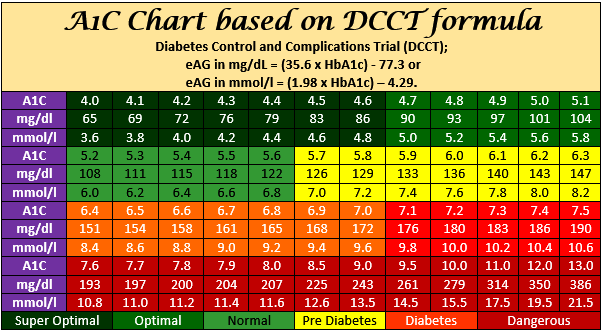 Western bypass, 64
Western bypass, 64
(8652) 951-951, (8652) 31-51-51 (Contact phone)
(8652) 31-68-89 (fax)
View more
Clinic of the family doctor:
355017 Stavropol, pr. K. Marx, 110 (behind the Central Department Store)
(8652) 951-951, (8652) 31-51-51 (contact phone)
(8652) 31-50-60 (registration)
View details
Nevinnomyssk branch:
9 0004
357107, Nevinnomyssk, st. Nizyaeva 1
(86554) 95-777, 96-127, 95-873 (registration)
View details
A separate structural subdivision in Cherkessk:
369000, Cherkessk, ave. Lenina, 85A
+7-988-700-81-06 (contact phones)
View details
Separate structural subdivision in Elista:
358000, Elista, st. Republican, 47
8(989) 735-42-07 (contact numbers)
View details
Regional Clinical Diagnostic Center CJSC:
355017 Stavropol, st. Lenina 304
Lenina 304
(8652) 951-951, (8652) 35-61-49 (fax)
(8652) 951-951, (8652) 31-51-51 (inquiry service)
special structural unit on st. Dovatortsev, 52A:
355037, Stavropol, st. Dovatortsev, 52A
8 (8652) 316-845 (contact phone)
View details
Separate structural subdivision at ul. Prigorodnaya, 193:
355026, Stavropol, st. Suburban, 193
8 (8652) 316-843 (contact phone)
View details
Savchenko, 38 bldg. 9:
355021, Stavropol, st. Savchenko, 38, building. 9
8 (8652) 316-847 (contact phone)
View details
Separate structural subdivision at ul. Chekhov, 77:
355000, Stavropol, st. Chekhov, 77
8(8652) 951-943 (contact phone)
View details
Separate structural subdivision in Mikhailovsk:
358000, Mikhailovsk, st. Lenina, 201 (in the new residential area “Aquarelle”).
8(988) 099-15-55 (contact phone)
View details
Biosen C-line | EKF-Diagnosis
Biosen C-line | EKF-Diagnostics
Biosen C-Line
Key features
Sensor chip (no membranes!) for easy and fast application
Built-in quality control program according to German regulations
Bottom Greater cost per measurement thanks to reduced reagent consumption
Compact design
Memory of 1000 measurement results
For use in clinics, laboratories, sports medicine
Intended use
BIOSEN C_line is intended for the quantitative determination of glucose and lactate in human whole blood, plasma and serum. The sample is taken into a capillary, which is placed in a test tube filled with hemolyzing buffer, and then measured by the instrument. Because test material is potentially infectious, used tubes should be decontaminated according to your facility’s guidelines.
BIOSEN C_line is intended for use in professional healthcare settings, medical centers and clinical laboratories for clinical diagnosis or sports medicine use. Blood sampling and handling of the BIOSEN C_line device must be performed by personnel trained in the use of the device and having the necessary medical qualifications to perform in vitro diagnostic procedures.
Measuring principle
Determination of glucose and lactate content is based on an electrochemical method of analysis using specially designed chip sensors. The sample is automatically fed into the device on the sensor chip. Here, the D-glucose and L-lactate contained in the sample are converted enzymatically by the immobilized glucose oxidase/lactate oxidase enzyme. The reaction releases gluconic acid/pyruvic acid and hydrogen peroxide. Hydrogen peroxide is detected by the electrode. It is very important that the sensor be calibrated with a solution of known concentration. The result of the measurement will be an electric current that is proportional to the glucose concentration. The unknown glucose concentration is calculated relative to this calibration. After each analysis, the sensor chip is automatically cleaned with the system solution. This removes the remains of the sample. The system is then ready to measure the next sample.
The unknown glucose concentration is calculated relative to this calibration. After each analysis, the sensor chip is automatically cleaned with the system solution. This removes the remains of the sample. The system is then ready to measure the next sample.
Options
BIOSEN C_line GP+
BIOSEN C_line Clinic
Simple 3-Step Measurement
1. Collect a capillary blood sample.
2. Place the capillary into the tube and mix.
3. Result after 20-45 seconds.
Features, features and consumables
Technical data
| MEASUREMENT PRINCIPLE | Enzymatic, amperometric |
| ELECTRODES | Enzymatic chip sensor |
| MEASURING RANGE – GLUCOSE | 0. 5-50 mmol/l (9-900 mg/dl) 5-50 mmol/l (9-900 mg/dl) |
| MEASURING RANGE – LACTATE | 0.5-40 mmol/l (5-360 mg/dl) |
| COEFFICIENT OF VARIATION | 1.5% at 12 mmol/l |
| STABILITY / DRIFT | 3% at 10th measurement, relative to 12 mmol/L |
| SENSOR LIFE – GLUCOSE | Maximum 90 days or 10,000 samples |
| SENSOR LIFE – LACTATE | Max 60 days or 10,000 samples |
| MEASUREMENT MATERIAL (SAMPLE TYPE) | Blood, plasma or serum |
| SAMPLE VOLUME | 20 µl (10 µl Pediatric) |
| VOLUME OF TUBES | 2. 0 ml 0 ml |
| LANGUAGES | German, English, Russian, Spanish, French, Polish. Other languages on request |
| OPERATING TEMPERATURE RANGE | From +15 to +35 °C, Alarm when the temperature exceeds the operating limits (15-35°C) |
| HUMIDITY | 20 – 85% |
| POWER SUPPLY | 100 – 250 V / 50 – 60 Hz |
| INPUT POWER | 30V |
| DIMENSIONS (LxWxH) | 280 x 280 x 95 mm |
| WEIGHT | Approx. 3 – 5 kg 3 – 5 kg |
| CALIBRATION MODES | Automatic, forced, economical |
| PRINTER | RS 232 C (V.24) |
| DISPLAY / KEYBOARD | Graphic/Touch (320 x 240 dots), Alpha/Numeric |
| MEMORY | 1000 measurements |
Contents
| > | GP+ | Clinic | ||
|---|---|---|---|---|
| Std. | Possible | Std. | Possible | |
| QUALITY CONTROL | ||||
| LOWER REAGENT CONSUMPTION | ||||
| MEMORY FOR 1000 MEASUREMENTS | ||||
| GRAPHIC / TOUCH DISPLAY | ||||
| AUTO SAMPLE RECOGNITION | ||||
| BARCODE | ||||
| FIELD POSSIBLE (WHEN USING INVENTOR) | ||||
| PARAMETER – GLUCOSE | ||||
| PARAMETER – LACTATE | ||||
| Rush STAT | ||||
| ITEMS FOR Rush SAMPLES, CONTROLS AND STANDARDS | ||||
| SAMPLE NUMBER | 5 | – | 20 | – |
| CAPACITY (RESULTS PER HOUR) | approx. 120 120 | – | approx. 180 | – |
| CALIBRATION MODES | 3 | – | 3 | – |
References
| BIOSEN C_LINE GP+ | |
|---|---|
| BIOSEN C_LINE GP+, 1 CHANNEL | 5213-0051-6200 |
| BIOSEN C_LINE GP+, 2 CHANNELS | 5213-0121-6200 |
| BIOSEN C_LINE CLINIC | |
| BIOSEN C_LINE CLINIC, 1 CHANNEL | 5214-0051-2200 |
| BIOSEN C_LINE CLINIC, 2 CHANNELS | 5214-0121-2200 |
| BIOSEN C_LINE CLINIC, 2 CHANNELS, BARCO READER | 5214-0121-2202 |
| SENSORS | |
| GLUCOSE SENSOR CHIP (TYPE II) | 5206-3011 |
| LACTATE SENSOR CHIP (TYPE II) | 5206-3029 |
| PLUG FOR SENSOR UNIT | 5206-3135 |
| SOLUTIONS | |
SOLUTION MULTI-STANDARD, 2ML, 50 PCS. | 5211-3015 |
| SOLUTION MULTI-STANDARD, 2ML, 100 PCS. | 5211-3017 |
| GLUCOSE/LACTATE SOLUTION, SYSTEMIC 500 ML. | 0201-0002-025 |
| GLUCOSE/LACTATE SOLUTION, SYSTEMIC 2.500 ML. | 0201-0002-024 |
| GLUCOSE/LACTATE SOLUTION, SYSTEMIC 5,000 ML. | 0201-0002-026 |
| GLUCOSE/LACTATE SOLUTION, HEMOLYSING 5,000 ML. | 0209-0100-050 |
| CONTROL MATERIALS | |
| READYCON NORM, 1ml, 25 pcs. | 5130-6152 |
| READYCON PAT, 1ml, 20 pcs. | 5130-6162 |
GLUCOSE/LACTATE SENSOR SOLUTION, TEST 1.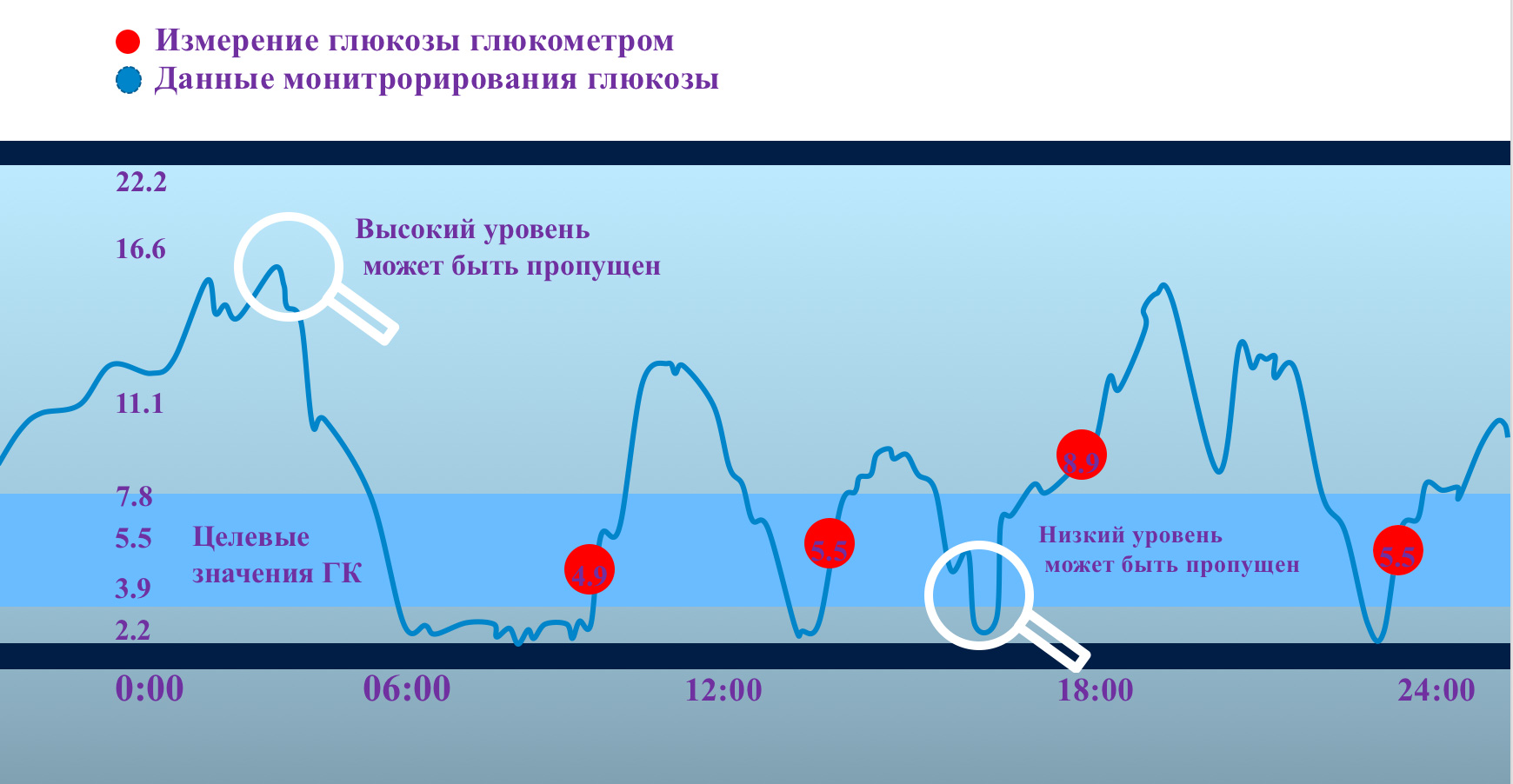 5 ml, 20 pcs. 5 ml, 20 pcs. | 5130-6055 |
| LINEAR GLUCOSE/LACTATE TEST (2 mmol/l, 7 mmol/l, 18 mmol/l) 3 pcs. | 0209-0102-391 |
| PRE-KIT | |
| GLUCOSE/LACTATE SOLUTION, HEMOLYSING (WITH 20 µL CAPILLARIES IN MICROTUBES) 1X1,000 PCS. | 0209-0100-012 |
| GLUCOSE/LACTATE SOLUTION, HEMOLYSING (WITH 20 µL CAPILLARIES IN MICROTUBES) 5X200 PCS. | 0209-0100-014 |
| GLUCOSE/LACTATE SOLUTION, HEMOLYSING (MICROTUBES) 1,000 PCS. | 0209-0100-122 |
| GLUCOSE/LACTATE SOLUTION, HEMOLYSING (WITH 10 µL CAPILLARIES IN MICROTUBES) 1,000 PCS | 0209-0100-005 |
HOLDER FOR CAPILLARIES 1 PC. | 0901-0200-002 |
| CLEANING SOLUTIONS | |
| DISINFECTANT SOLUTION, 75 µL, 5 pcs. | 0201-0003-001 |
| CLEANING SOLUTION/DEPROTEINIZER, 30 µl, 5 pcs. | 0201-0004-001 |
| TUBES AND CAPILLARIES | |
| EKF SAFECUPS, 2 ML, 1000 PCS | 8200-0011-0034 |
| SODIUM-HEPARIN PLASTIC CAPILLARIES, END-TO-END, (10×100), 20 µl, 1000 pcs. | 7111-0011-20H |
Please note:
The barcode reader is built in at the factory and is not supplied separately!
Presentation BIOSEN_C line
Approvals
07/24/2017
REFUSAL LETTER
“On the absence of the need for mandatory confirmation of compliance”
REGISTRATION AUTHORIZATION
21.

 cdc.gov/diabetes/basics/getting-tested.html
cdc.gov/diabetes/basics/getting-tested.html cdc.gov/diabetes/basics/getting-tested.html
cdc.gov/diabetes/basics/getting-tested.html